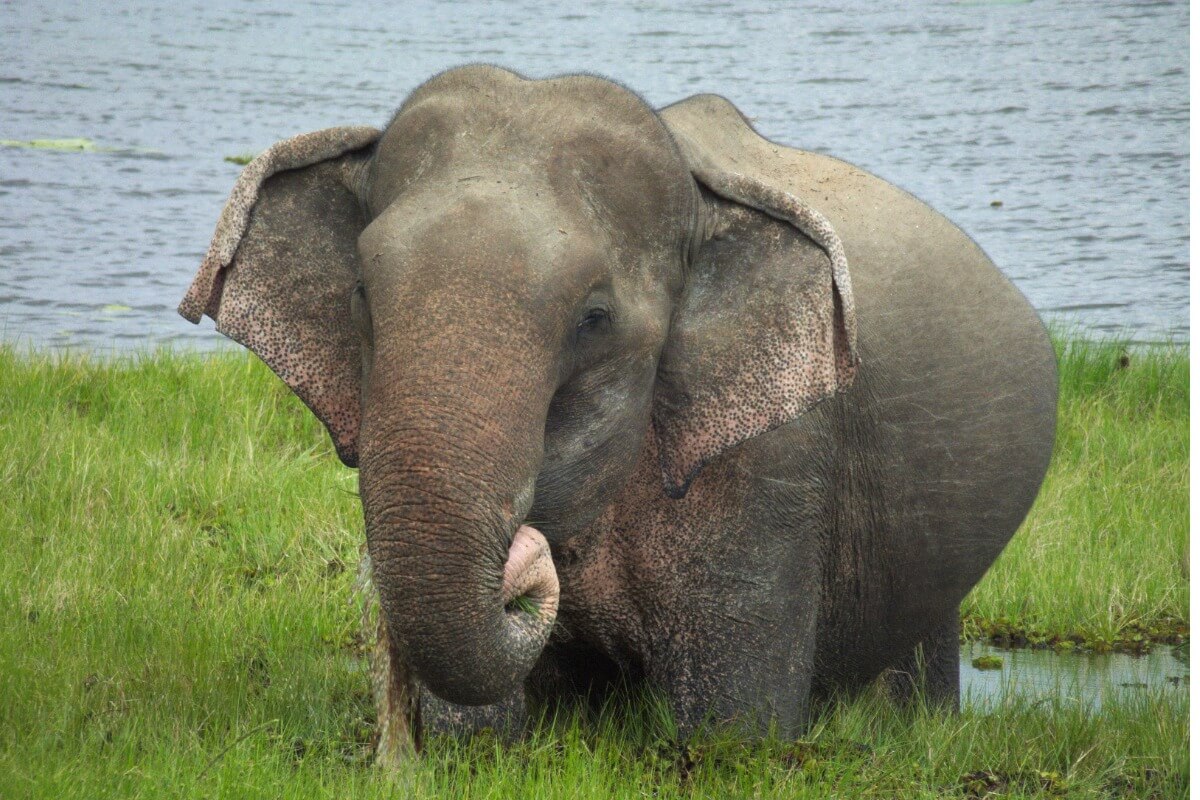Mass Extinctions: Find Out How Many Species May Disappear by 2100

Planet Earth has suffered several mass extinctions throughout its history. As the name implies, these phenomena are characterized by the disappearance of many species around the world. As a result, this alters the ecosystemic balance and modifies the environment. Recent studies indicate that by 2100 a similar scenario will be experienced, as around 20% of species could disappear by then.
Although it’s true that mass extinctions are natural biological events, it has been shown that human activities can accelerate the process. This is the reason why pollution, the emission of gases into the atmosphere, the destruction of ecosystems, and land use change are considered as some of the main causes. Continue reading and find out more about it.
What are mass extinctions?
Mass extinctions are considered to be the sudden loss of a large number of living beings, up to 30% of the world’s diversity. This abrupt change in the stability of the ecosystem affects the climate and the environment, so that environmental conditions become more extreme and aggressive for the rest of the species.
Mass extinction not only affects plants and animals, but also different microorganisms that live both in continental masses and on the ocean floor. In short, it’s a devastating global event that causes several profound changes in nature.
Mass extinctions usually take place in a relatively short period of time (between thousands and millions of years) if the geological time scale is taken as a reference. This is the reason why most living things aren’t able to adapt and perish quickly.

What causes mass extinctions?
Mass extinctions are caused by many different factors. In fact, these aren’t always the same, as each scenario presents its own circumstances that promote the disappearance of species. Among the known causal agents of these catastrophes are the following:
- Climate change
- Changes in sea levels or conditions
- Overpopulation of some species
- Impacts of asteroids or comets
- Volcanic eruptions
- Changes in the Earth’s magnetic field
- Excess radiation from outer space (due to supernovae)
- Impact of human activities (gas emissions, pollution, etc.)
How many mass extinctions have occurred on the planet?
Although there is still much debate, most specialists agree that the earth has experienced 5 major mass extinctions in the past. Each of these is shown below:
- Upper Ordovician extinction (440 to 450 million years ago): the disappearance of about 100 families of marine invertebrates.
- Upper Devonian extinction (372 million years ago): the disappearance of many marine species that belonged to eurypterids, ostracods, asteroids, and crinoids, among others.
- Permian-Triassic extinction (250 million years ago): the loss of 90% of marine species and almost 70% of terrestrial species is estimated.
- Upper Triassic extinction (almost 200 million years ago): about 20% of the taxonomic families that lived in the sea disappeared. Several large amphibian species were also lost.
- Cretaceous-Tertiary extinction (65 or 66 million years ago): the best known due to the extinction of emblematic reptile species (dinosaurs).
The beginning of the sixth mass extinction
Many specialists suggest that the recent disappearance of species around the world signifies the beginning of a sixth mass extinction. Climate change, together with pollution, agriculture, livestock, and the invasion of exotic species seem to be the main culprits. However, it’s possible that there may be other causal agents that are still unknown.
Moreover, some scientists have carried out several simulations to predict what will happen to the flora and fauna in the future. Although the results vary somewhat, they all agree that a large number of species could disappear by the end of this century.

More than 10% of species could disappear by 2050
According to a recent study published in the journal Science Advances, if current environmental conditions continue, it’s expected that between 6 and 10% of biological diversity will be lost by 2050. With this same trend, by 2100 it’s estimated that between 13 and 27% of current species will be lost.
In other words, one in 10 species could disappear by 2050, while two in 10 could disappear by 2100. Of course, this is only a simulation that takes into account some of the factors that lead to mass extinction, so things could be even worse in the future.
Can mass extinctions be avoided?
Once we know the cruel fate that awaits many of the animals and plants that exist in the world, we obviously want to know how we can prevent it. However, this isn’t entirely possible, as the extinction of species has already begun and is advancing by leaps and bounds. The only way to save them is through drastic and immediate global change, which is impossible to achieve.
While mass extinction cannot be avoided, it’s still plausible to reduce the severity of its impact. To do so, it’s crucial to focus on environmental restoration and protection activities, as well as encouraging the regulation of the exploitation of the natural environment.
Although this sounds simple, the task is complex and requires the cooperation of people, government and scientists. All is not lost; there’s still hope of rescuing several animals and plants from extinction. However, this will require changing many human habits and thoughts, and being willing to give up some of our comforts.
All cited sources were thoroughly reviewed by our team to ensure their quality, reliability, currency, and validity. The bibliography of this article was considered reliable and of academic or scientific accuracy.
- Briggs, J. C. (2017). Emergence of a sixth mass extinction?. Biological Journal of the Linnean Society, 122(2), 243-248.
- Strona, G., & Bradshaw, C. J. (2022). Coextinctions dominate future vertebrate losses from climate and land use change. Science Advances, 8(50), eabn4345.
- Normander, B. (2012). Biodiversidad: combatir la sexta extinción masiva. La situación del mundo, 16.
- Maldonado, C. E. (2009). Evolución, teoría de las extinciones, complejidad. Acta biológica colombiana, 14, 283-300.
- Rodríguez Sousa, A. A. (2018). Ciencia y divulgación sobre la sexta extinción masiva de biodiversidad,¿ es realmente el cambio climático el principal responsable?. La comunicación de la mitigación y la adaptación al Cambio Climático.
- Molina, E. (2008). Etapas y causas de la sexta extinción en masa. Arcega C, Lahoz J (coords.) La Vida en el Terciario Del impacto el meteorito al origen del hombre, 187-2013.
- Sassi, F. (2019). HISTORIA DE LA VIDA EN LA TIERRA: EXTINCIONES MASIVAS. (Tesis de maestría, Universidad de Jaen).
- Prados-Téllez, C. (2014). Grandes catástrofes en la historia de La Tierra: extinciones en masa. (Tesis de grado, Universidad de Jaen).
This text is provided for informational purposes only and does not replace consultation with a professional. If in doubt, consult your specialist.